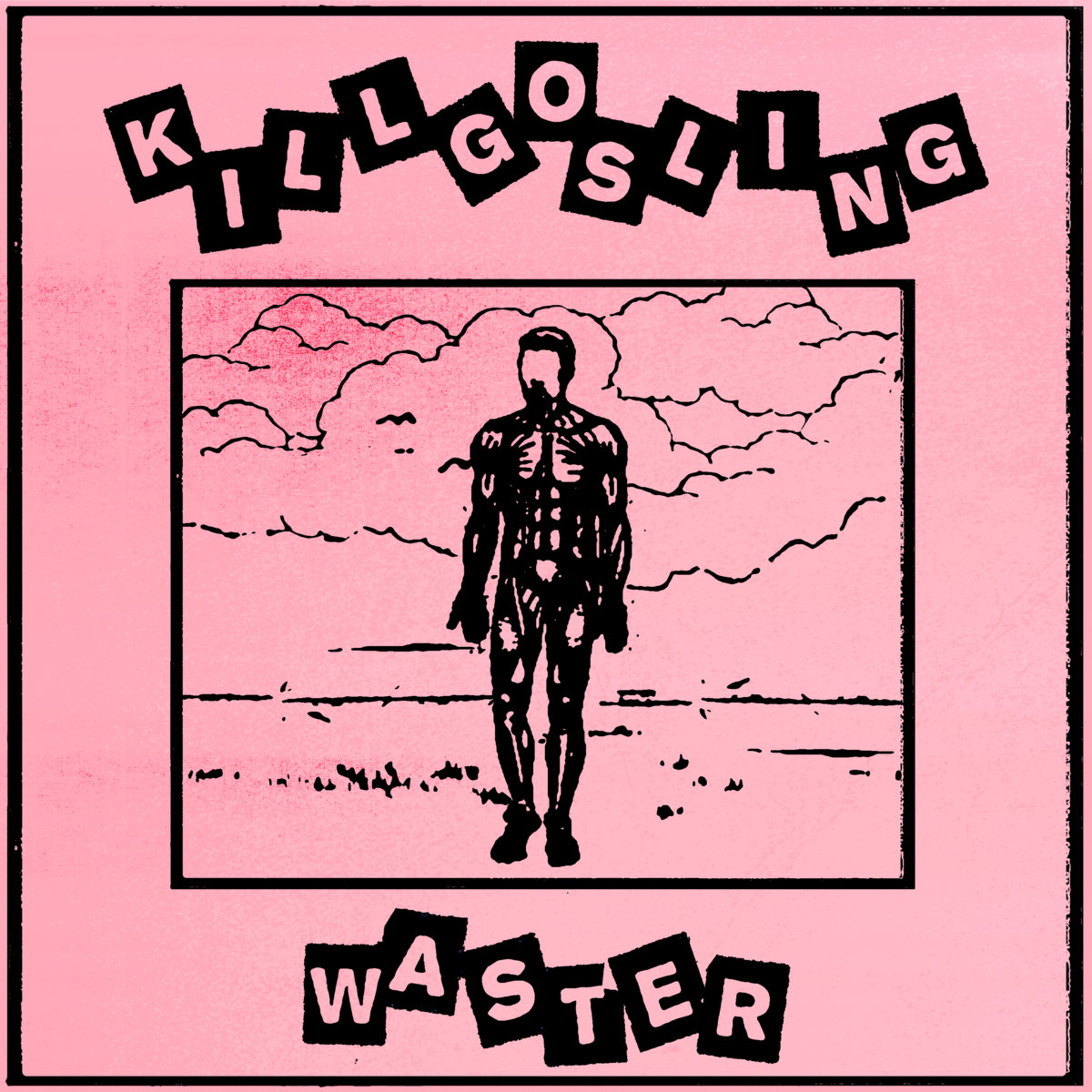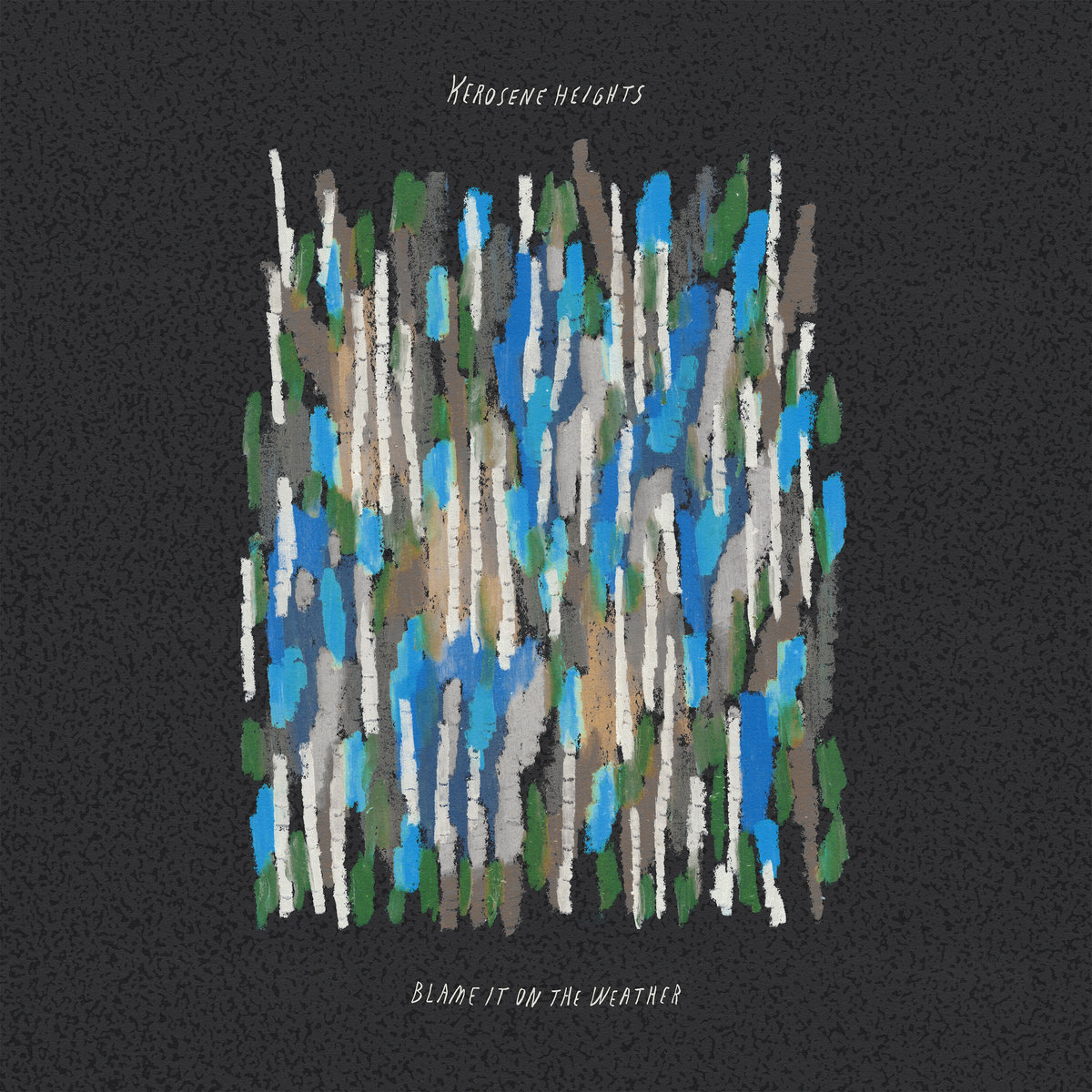Water Damage – In E | Album Review
/12XU
Water Damage make music that feels like it was concocted in a tonal laboratory exclusively for me. Their core discography up to this point has spanned five songs between two albums, 2022’s self-descriptive Repeater and 2023’s quantifiably titled 2 Songs. Their mantra is simple: “Maximal repetition. Minimal deviation.” The ever-rotating collective creates murky, album-side-length tracks that zone in on a singular riff or groove and ride it until it mutates or decays. They employ tactics that draw me so heavily to bands like Seattle’s drone-country legends Earth or Japan’s “underground freak out” collective Acid Mothers Temple. I’m no geography expert, but somewhere between Seattle and Japan must lie Austin, Texas, the home base for the members of Water Damage. The band appears to be the next installment of an already-incestuous scene of musicians, some of whom are already spread across fellow 12XU artists like Spray Paint and USA/Mexico. Most notably, Water Damage features multi-instrumentalist Thor Harris, who has played with Shearwater, Swans, and Xiu Xiu, among many others. The band’s first two albums were made in a seven-piece permutation, but they’ve now grown to ten members strong for their latest release, the massive double album In E.
Other than the semi-eponymous track titles (“Reel E,” “Reel EE,” and “Reel EEE”), the album title is a nod to Terry Riley’s 1964 landmark composition In C, one of the most celebrated works in experimental music. Unreleased until 1968, the initial In C performance and recording is a hypnotic, minimalist piece of neo-classical layers and rhythms. In C's first cut was made up of eleven players, with Riley’s orchestra featuring such avant-garde pioneers as Pauline Oliveros and Steve Reich, though Riley is quoted as suggesting, “a group of about 35 musicians is desired if possible.” In C has been re-interpreted by many experimental artists, from the aforementioned Acid Mothers Temple to the Swiss industrial cult group The Young Gods. It’s precisely the type of root that a band like Water Damage is well suited to pull from, being a relatively large band obsessed with long-winded, single-key grooves.
The only composition named differently is the closer “Ladybird,” which has featured performance and writing credits by Water Damage-associated band Shit & Shine. It actually is a minor break from the rest of the album’s mold, with the grounding riff being an E to F bent repetition. It’s also Water Damage’s first song to feature vocals, as garbled and affected as they are, but it was refreshing to hear them throw some new sounds at the listener after listening to an hour’s worth of intentionally consistent music.
It’s amusing to think about there being a “single” from this album; I suppose a better term may be “teaser,” although if The Decemberists can kick off their album rollout with a 19-minute, Wilco-aping prog-folk number, then Water Damage certainly has the capability and freedom to let “Reel E” be the “hit” off of this record. There’s a rich history of opening tracks on leftfield albums becoming genre staples: “Hallogallo” from the self-titled NEU! debut comes to mind, or more recently, “John L” by black midi off Cavalcade. “Reel E” isn’t too far from standard Water Damage fare, and is exactly what I come to the band to get: a swirling lo-fi jam with subtle progressions until its finish. The main noticeable change from last year’s 2 Songs is that the violin is featured much more prominently, almost like a lead instrument, whereas their previous recordings seemed to use it as an accent. Additionally, the presence of three extra members is clearly identifiable. These tracks have just that extra ounce of big room collaboration to them that round out the band’s sound even more than the first two albums.
The second song, “Reel EE,” anchors itself to a steady bass riff before angry beehive-sounding guitars explode around the three-and-a-half-minute mark. Their thick tone allows for lots of screeching feedback to compliment the track. From that point on, it’s non-stop, head-bobbing, heavy psych. It’s almost like a slightly friendlier version of The Dead C, another pioneering noise rock outfit known for their elongated recordings.
Finally, there's “Reel EEE,” and at this point, I could see some listeners considering tapping out. Water Damage does not make conventional music for conventional people, it’s one of the things that makes them one of my favorite bands of the decade. But even I’ll admit that is a lot of the key of E to handle in one sitting. I remember the only time I saw Sleep in concert and thinking, “Man, I love drop C tuning, but these motherfuckers REALLY love drop C tuning.” Despite the common anti-melodic structure between each track on In E, Water Damage serves identifiable flavors per reel. “Reel EEE” lives in ¾ time and relies more on that entrancing rhythm than it does squealingly heavy guitars or tons of feedback.
In E is a welcome addition to the Water Damage catalog, as it retains the energy of their first two albums while still trying a new challenge, aiming for an over 80-minute runtime. It may not be particularly exciting to those with short attention spans, but if you’re willing to be roped into their singularly notated world, it’s a high-rewarding listening experience. Here’s to hoping their next record is three LPs worth of entirely noteless instruments.
Logan Archer Mounts once almost got kicked out of Warped Tour for doing the Disturbed scream during a band’s acoustic set. He currently lives in Rolling Meadows, IL, but tells everyone he lives in Palatine.













